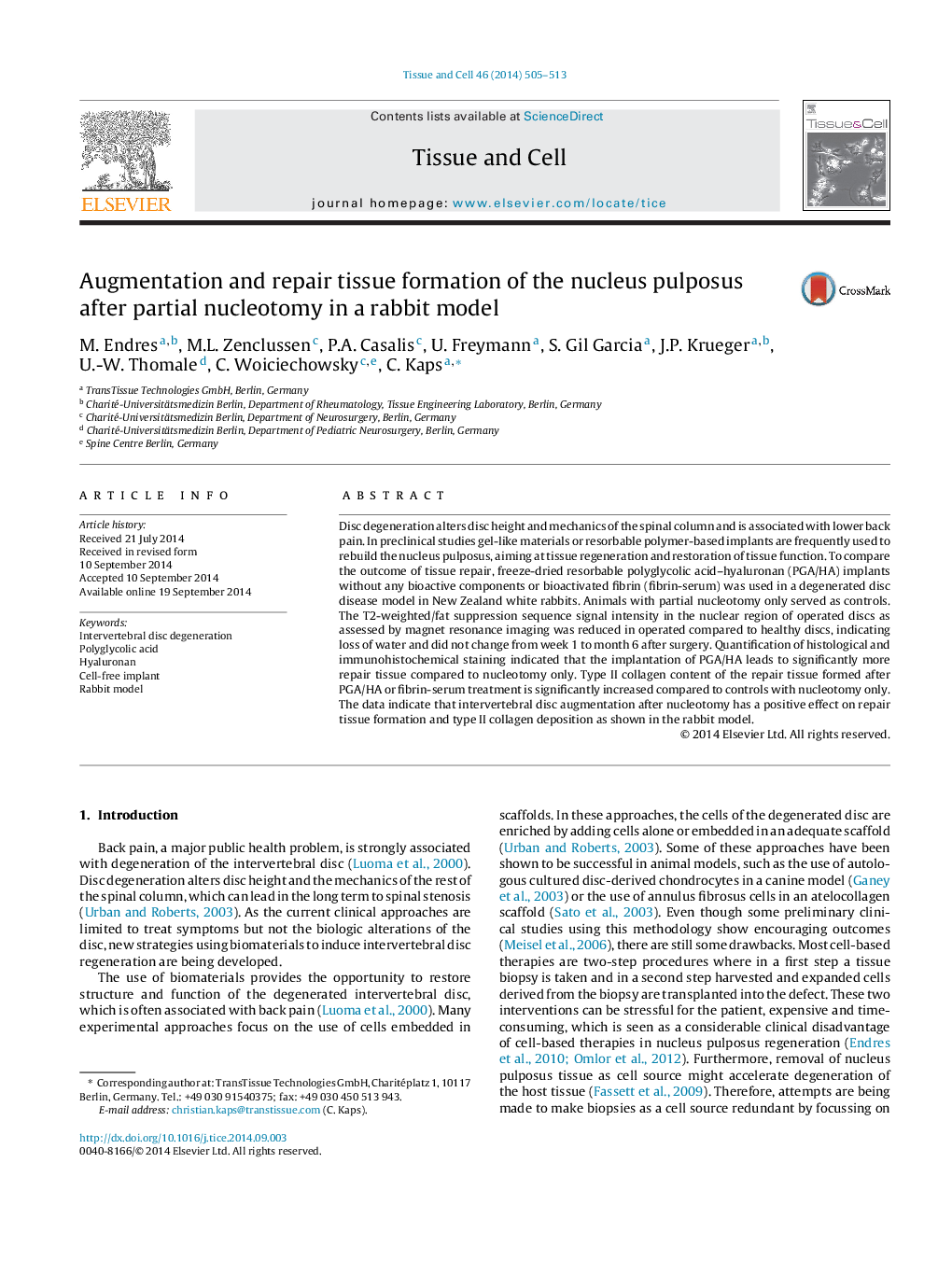| Article ID | Journal | Published Year | Pages | File Type |
|---|---|---|---|---|
| 2203646 | Tissue and Cell | 2014 | 9 Pages |
•IVD augmentation after nucleotomy has a positive effect compared to nucleotomy only.•Augmentation with PGA/HA or fibrin-serum increased collagen type II content.•Implantation of PGA/HA leads to significantly increased repair tissue formation.
Disc degeneration alters disc height and mechanics of the spinal column and is associated with lower back pain. In preclinical studies gel-like materials or resorbable polymer-based implants are frequently used to rebuild the nucleus pulposus, aiming at tissue regeneration and restoration of tissue function. To compare the outcome of tissue repair, freeze-dried resorbable polyglycolic acid–hyaluronan (PGA/HA) implants without any bioactive components or bioactivated fibrin (fibrin-serum) was used in a degenerated disc disease model in New Zealand white rabbits. Animals with partial nucleotomy only served as controls. The T2-weighted/fat suppression sequence signal intensity in the nuclear region of operated discs as assessed by magnet resonance imaging was reduced in operated compared to healthy discs, indicating loss of water and did not change from week 1 to month 6 after surgery. Quantification of histological and immunohistochemical staining indicated that the implantation of PGA/HA leads to significantly more repair tissue compared to nucleotomy only. Type II collagen content of the repair tissue formed after PGA/HA or fibrin-serum treatment is significantly increased compared to controls with nucleotomy only. The data indicate that intervertebral disc augmentation after nucleotomy has a positive effect on repair tissue formation and type II collagen deposition as shown in the rabbit model.
Graphical abstractFigure optionsDownload full-size imageDownload high-quality image (331 K)Download as PowerPoint slide
